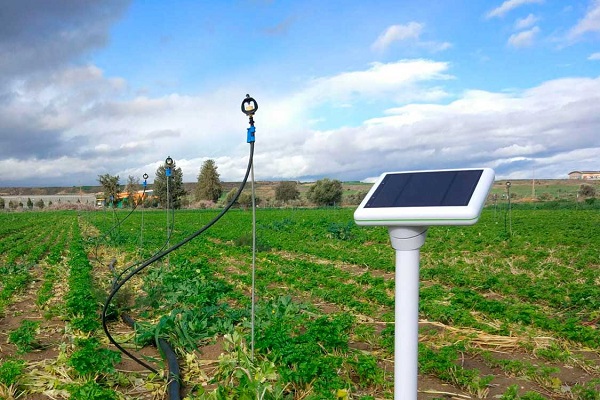The agriculture industry is on the brink of a technological revolution, driven by the need for sustainability, efficiency, and productivity.
AgriTech is transforming traditional farming practices with innovations that address climate change, labor shortages, and the growing global food demand. In 2024, several AgriTech trends are expected to lead the way, shaping the future of farming and the broader agri-food sector.
1. AI and Machine Learning in Precision Farming
Artificial intelligence (AI) and machine learning (ML) have already started reshaping precision farming by providing farmers with powerful tools to analyze data, predict outcomes, and make informed decisions. In 2024, the use of AI and ML will continue to grow, particularly in areas such as crop monitoring, soil health management, and weather forecasting.
- AI-driven crop monitoring: By utilizing satellite imagery, drones, and sensors, AI algorithms can detect crop diseases, monitor growth, and optimize irrigation.
- Predictive analytics: ML models will be increasingly used to predict yield outcomes, identify potential risks, and optimize resource allocation, reducing waste and increasing profitability.
2. Robotics and Automation
Labor shortages in agriculture have spurred the development of robotics and automation technologies. In 2024, the adoption of robotic harvesters, autonomous tractors, and drone-based solutions will accelerate, helping farmers improve efficiency while reducing labor costs.
- Robotic harvesters: These machines are capable of performing tasks such as picking fruits and vegetables with precision and speed, significantly reducing the reliance on manual labor.
- Autonomous machinery: Self-driving tractors and sprayers are set to become more sophisticated, allowing for precise planting, weeding, and pesticide application, all while minimizing human intervention.
3. Vertical Farming and Controlled Environment Agriculture (CEA)
As urbanization increases and arable land becomes scarcer, vertical farming and CEA will play a critical role in food production. In 2024, we will see greater adoption of indoor farms that use technology to control light, temperature, humidity, and nutrients, ensuring year-round crop production with minimal water and space.
- Hydroponics and aquaponics: These soil-free growing techniques will continue to gain popularity, particularly in urban areas, where they enable the cultivation of fresh produce close to consumers.
- Energy-efficient systems: Advances in LED lighting and renewable energy integration will make vertical farming more sustainable and cost-effective.
4. Blockchain for Supply Chain Transparency
Blockchain technology is revolutionizing agricultural supply chains by offering greater transparency, traceability, and trust. In 2024, more farmers and agribusinesses will adopt blockchain solutions to track the origin and quality of produce, ensuring that consumers can access detailed information about their food’s journey from farm to table.
- Improved traceability: Blockchain allows for real-time tracking of products through the entire supply chain, reducing fraud and ensuring compliance with food safety standards.
- Smart contracts: These blockchain-based agreements will automate transactions between farmers, suppliers, and retailers, enhancing efficiency and reducing the potential for disputes.
5. Biotechnology and Gene Editing
Biotechnology, including CRISPR and other gene-editing tools, is set to have a significant impact on crop improvement in 2024. These technologies enable scientists to develop crops that are more resistant to pests, diseases, and climate-related stresses, all while enhancing nutritional content.
- Drought-resistant crops: With climate change leading to unpredictable weather patterns, gene-edited crops that can thrive in drought conditions will be critical for food security.
- Enhanced nutritional value: Gene editing will enable the development of crops with improved nutritional profiles, helping to combat malnutrition and improve public health.
6. AgriFintech for Farmer Empowerment
The intersection of agriculture and financial technology, known as AgriFintech, is poised to grow in 2024, providing farmers with access to financial services that were previously out of reach. AgriFintech solutions offer farmers better access to credit, insurance, and digital payments, helping them manage risks and invest in new technologies.
- Digital platforms: These platforms enable farmers to connect with lenders, insurers, and buyers, streamlining transactions and providing financial transparency.
- Microloans and insurance: Innovative financial products tailored to smallholder farmers will become more common, helping them secure the resources they need to grow their businesses.
7. Sustainable Agriculture Practices
Sustainability will remain a key focus in 2024, with an increasing emphasis on regenerative agriculture, agroforestry, and organic farming. Farmers are adopting practices that not only increase productivity but also restore soil health, sequester carbon, and reduce the environmental impact of farming.
- Regenerative agriculture: This approach focuses on improving soil health through crop rotation, cover cropping, and minimal tillage, helping to sequester carbon and enhance biodiversity.
- Water conservation technologies: Innovations like drip irrigation and water recycling systems will continue to gain traction, helping farmers manage water resources more efficiently.
8. Internet of Things (IoT) in Smart Farming
The IoT is revolutionizing agriculture by enabling real-time monitoring of farm operations through connected devices and sensors. In 2024, the use of IoT in smart farming will become even more widespread, allowing farmers to gather data on everything from soil moisture levels to animal health.
- Smart irrigation systems: These systems use IoT sensors to monitor soil moisture and adjust watering schedules automatically, reducing water usage while maximizing crop yield.
- Livestock monitoring: Wearable sensors for livestock will help farmers monitor animal health, track movement, and detect early signs of illness, improving overall animal welfare.
Conclusion
As AgriTech continues to evolve, 2024 promises to be a year of significant advancements that will shape the future of farming.
From AI-powered precision farming to sustainable agricultural practices, these trends offer exciting opportunities for farmers to increase productivity, reduce costs, and meet the growing demand for food in an environmentally friendly way.
Embracing these innovations will not only transform agriculture but also contribute to a more sustainable and secure global food system.
Also Read
Zimbabwe’s Champions Insurance boosts farmers with satellite imagery technology
Construction starts for largest agri-solar plant in south Africa
